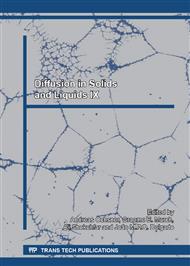p.223
p.228
p.233
p.239
p.244
p.248
p.254
p.259
p.263
The Synthesis of High-Surface Area Silicon Carbide by Conversion Method Using Carbosilane Polymer
Abstract:
Since mesoporous silica such as MCM-41 and SBA-15 was developed, the study of the properties of high-surface area materials was accelerated. Moreover, the mesoporous silica is used as a template to produce high-surface materials by nanocasting technology. The purpose of this paper is the synthesis of a high surface silicon carbide sphere by the nanocasting technology. In this study, KCC-1 silica sphere was used as a template, and polycarbosilane and poly (phenyl carbosilane) were selected for precursor of silicon carbide. Carbosilane polymer gives advantage of synthesis silicon carbide under low temperature, and hollow spheres were produced. In this study, the polycarbosilane was more effective for the synthesis of SiC hollow spheres by inversion of template structure showing a fibrous morphology on the sphere wall. And it was confirmed that the sphere was composed of nanosized SiC crystals, and has high surface area using TEM, XRD and BET analysis.
Info:
Periodical:
Pages:
244-247
Citation:
Online since:
May 2014
Authors:
Keywords:
Price:
Сopyright:
© 2014 Trans Tech Publications Ltd. All Rights Reserved
Share:
Citation:


